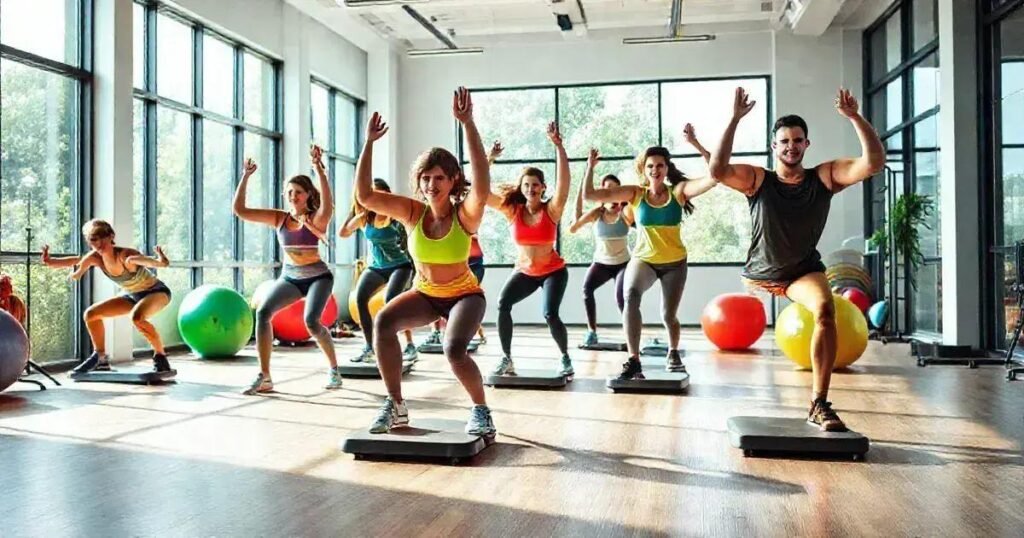Are you tired of feeling stiff and uncoordinated in your daily activities? Do you struggle to perform everyday tasks without feeling fatigued? It’s time to consider functional training, a type of exercise that focuses on building strength and endurance in a way that mirrors real-life movements.
With functional training, you’ll be able to tackle daily tasks with ease and confidence. In this article, we’ll explore the benefits of functional training, its components, and how to incorporate it into your fitness routine.
Whether you’re a fitness enthusiast or just looking for a way to improve your overall health, functional training is an excellent choice.
Table of Contents
Understanding the Importance of Functional Training
Functional training is a form of exercise that focuses on building strength and endurance through movements that mimic daily activities. Unlike traditional exercises that isolate specific muscle groups, functional training promotes coordination, balance, and overall athleticism. By incorporating functional training into your routine, you can improve your ability to perform daily tasks with ease and confidence, reducing your risk of injury and improving your overall quality of life. Whether you’re looking to improve your athletic performance, enhance your coordination, or simply feel more agile and capable, functional training is an effective and engaging way to achieve your goals.
Functional training is not just for athletes or fitness enthusiasts. The benefits of functional training can be applied to everyday life, making it an excellent choice for individuals of all ages and fitness levels. By incorporating functional training exercises into your daily routine, you can improve your ability to perform tasks such as carrying groceries, playing with your children, or simply getting up from a chair without feeling fatigued. Functional training can also help improve your posture, reduce back pain, and enhance your overall mobility, making it an excellent choice for individuals with chronic pain or mobility issues.
A functional training workout typically includes a combination of exercises that target different muscle groups, including the core, upper body, and lower body. These exercises are designed to mimic real-life movements, such as squatting, lunging, and pushing, and are often performed in a circuit-style format to maximize time and energy. Functional training workouts can be customized to meet your specific needs and goals, whether you’re looking to improve your strength, endurance, or coordination. When designing a functional training workout, it’s essential to incorporate exercises that challenge your balance, coordination, and proprioception to ensure a comprehensive and effective workout.
Functional training exercises can be used to improve strength and endurance in a variety of ways. For example, bodyweight exercises such as push-ups, squats, and lunges can be modified to challenge different muscle groups and increase difficulty as you progress. Resistance band exercises can also be used to target specific muscle groups, such as the shoulders or legs, and can be adjusted to increase or decrease resistance as needed. Additionally, plyometric exercises such as jump squats and box jumps can be used to improve power and explosiveness, making functional training an excellent choice for athletes and fitness enthusiasts looking to take their performance to the next level.
While functional training can be an effective and engaging way to improve your fitness, there are some common mistakes to avoid. One common mistake is neglecting to warm up properly, which can increase your risk of injury and reduce the effectiveness of your workout. Another mistake is failing to incorporate exercises that challenge your balance and coordination, which can lead to poor form and decreased mobility. Additionally, neglecting to incorporate rest and recovery days into your routine can lead to burnout and decreased motivation. By avoiding these common mistakes and incorporating functional training into your routine, you can achieve your fitness goals and enjoy the many benefits of this effective and engaging form of exercise.
By incorporating functional training into your fitness routine, you can take your fitness to the next level and achieve your goals. Whether you’re looking to improve your athletic performance, enhance your coordination, or simply feel more agile and capable, functional training is an effective and engaging way to achieve your goals. By focusing on building strength, endurance, and coordination through functional training exercises, you can improve your overall fitness and enjoy a higher quality of life. So why wait? Start incorporating functional training into your routine today and discover the many benefits of this effective and engaging form of exercise.
Benefits of Functional Training for Everyday Life
Functional training can bring numerous benefits to everyday life, from improving mobility and flexibility to reducing the risk of injury and enhancing overall athleticism.
One of the primary benefits of functional training is its ability to improve coordination and balance, allowing individuals to perform daily tasks with greater ease and confidence.
Additionally, functional training can help to strengthen the core and improve posture, reducing the risk of back pain and other musculoskeletal disorders.
Furthermore, functional training can be adapted to suit individuals of all ages and fitness levels, making it an excellent choice for individuals with chronic pain or mobility issues.
By incorporating functional training into your daily routine, you can improve your overall health and wellbeing, and enhance your ability to perform daily tasks with ease and confidence.
Components of a Functional Training Workout
A functional training workout typically consists of a combination of exercises that target different muscle groups, including the core, upper body, and lower body.
These exercises are designed to mimic real-life movements, such as squatting, lunging, and pushing, and are often performed in a circuit-style format to maximize time and energy.
Functional training workouts can be customized to meet the specific needs and goals of the individual, whether that be improving strength, endurance, or coordination.
In addition to exercises that target specific muscle groups, functional training workouts also include exercises that challenge balance, coordination, and proprioception, such as single-leg squats, balance boards, and agility drills.
Functional Training Exercises for Strength and Endurance
Functional training exercises can be used to improve strength and endurance in a variety of ways.
One effective method is to incorporate exercises that challenge the core, such as planks, side planks, and Russian twists. These exercises can help improve stability and balance, which is essential for many everyday activities.
Another way to improve strength and endurance is to incorporate exercises that target specific muscle groups, such as squats, lunges, and deadlifts.
Additionally, plyometric exercises such as jump squats and box jumps can be used to improve power and explosiveness.
By incorporating a combination of these exercises into your functional training workout, you can improve your overall strength and endurance and achieve your fitness goals.
Common Mistakes to Avoid in Functional Training
When it comes to functional training, there are several common mistakes that individuals may make. One mistake is neglecting to warm up properly before a workout, which can increase the risk of injury and reduce the effectiveness of the exercise.
Another mistake is not incorporating exercises that challenge balance and coordination, which can lead to poor form and decreased mobility.
Additionally, neglecting to incorporate rest and recovery days into a workout routine can lead to burnout and decreased motivation.
By avoiding these common mistakes and incorporating functional training into your routine, you can achieve your fitness goals and enjoy the many benefits of this effective and engaging form of exercise.
Conclusion: Taking Your Fitness to the Next Level
In conclusion, functional training is a highly effective and engaging way to improve your overall fitness and wellbeing. By incorporating functional training exercises into your workout routine, you can improve your strength, endurance, and coordination, and reduce your risk of injury.
Remember to avoid common mistakes, such as neglecting to warm up and not incorporating rest and recovery days. With functional training, the possibilities are endless, and you can take your fitness to the next level.
So why wait? Start incorporating functional training into your routine today and experience the many benefits for yourself.
FAQ – Frequently Asked Questions about Functional Training
What are the benefits of functional training for everyday life?
Functional training can improve mobility, flexibility, and coordination, making daily activities easier and more efficient.
How can I incorporate functional training into my workout routine?
You can incorporate functional training exercises into your workout routine by focusing on exercises that mimic real-life movements, such as squats, lunges, and deadlifts.
What are some common mistakes to avoid in functional training?
Common mistakes to avoid in functional training include neglecting to warm up, not incorporating exercises that challenge balance and coordination, and neglecting to incorporate rest and recovery days.
How can functional training improve my overall fitness and wellbeing?
Functional training can improve your overall fitness and wellbeing by increasing strength, endurance, and coordination, and reducing the risk of injury.
Can functional training be adapted to suit my fitness level?
Yes, functional training can be adapted to suit your fitness level by modifying exercises to make them more challenging or easier.
What are some tips for getting started with functional training?
Some tips for getting started with functional training include starting slowly, focusing on proper form and technique, and incorporating exercises that challenge your balance and coordination.



